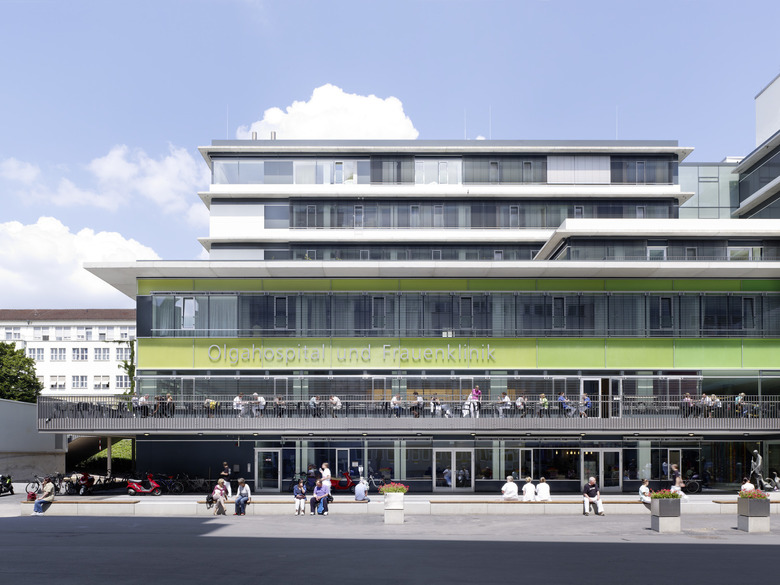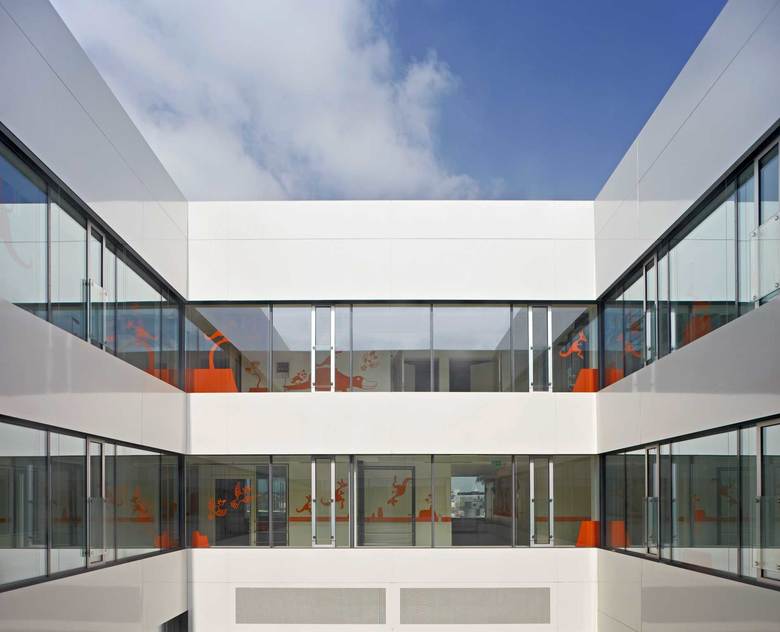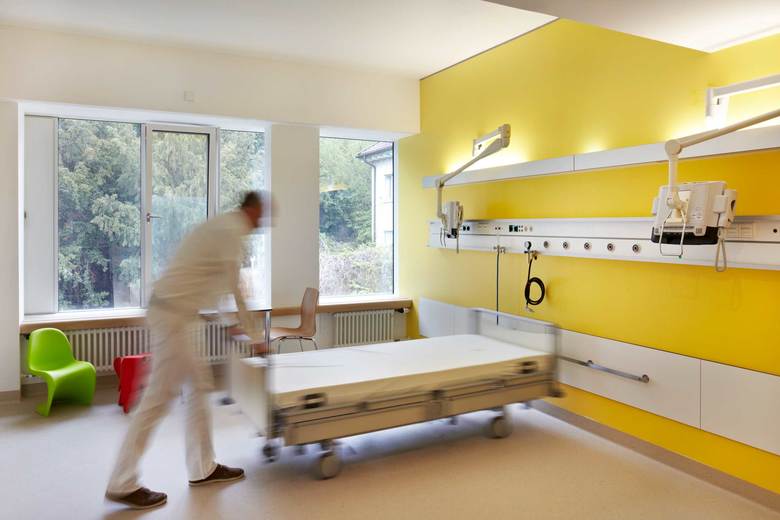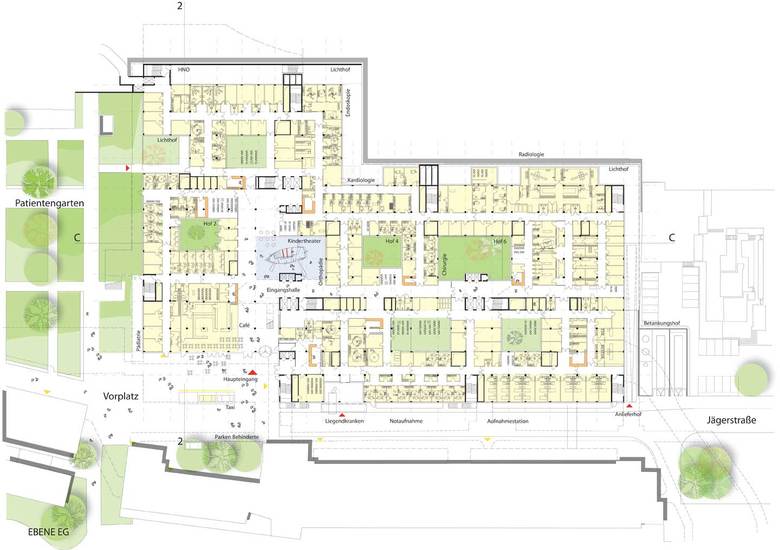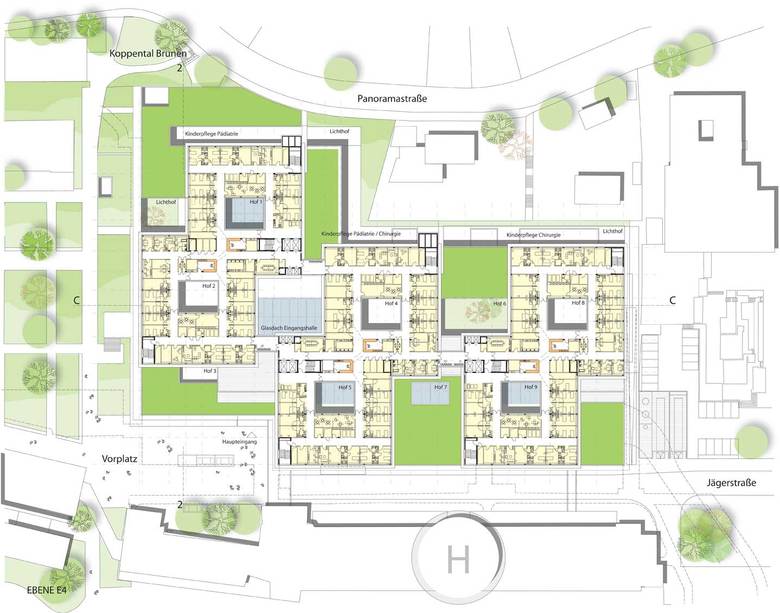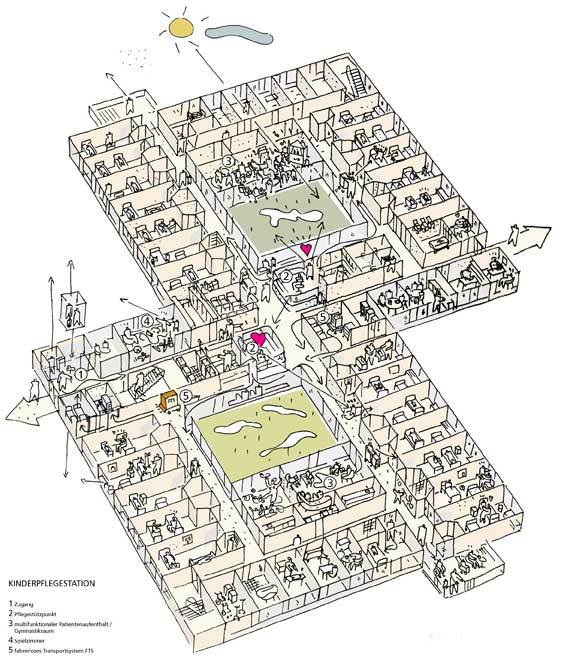Olga Hospital und Women’s Clinic
Stuttgart, Germany
New Olga Hospital und Women’s Clinic opens in Stuttgart – Combining two treatment centres to provide ideal conditions: a new hospital centre with 405 beds, exceptional operational qualities and a unique identity.
Düsseldorf/Stuttgart, Germany, 13 May 2014. In Stuttgart, the sixth-largest city in Germany, the Children’s and Women’s Clinics had previously been located at two separate sites. Since last Saturday’s opening ceremony, the new building unites the two facilities on the campus of the Katharinenhospital in the heart of the city. The combination of the two clinics makes sense on both medical and economical levels and is as such part of Klinikum Stuttgart’s structural and operational re-organisation.
The hospital was designed by HPP Architects in collaboration with Sorg und Frosch Planungs GmbH (HPP::SFP). The winning entry in the 2004 competition solved the problem of accommodating the paediatric facilities of the Olga Hospital and the Women’s Clinic in a single building on a sloping site with limited space.
The completed project consists of seven storeys above ground and three underground levels. The bright and welcoming atmosphere is provided by partially-glazed atria; a new green axis on the western side of the building offers recreational space and gardens for the patients and connects the site to the city park.
The patient areas, which are organised as square pavilions, sit on top of a single, multi-storey building base, which houses the operational facilities, such as the reception, accident and emergency department, examination rooms, operating theatres, laboratories, physiotherapy unit, staff rooms and conference rooms. The individual pavilions are connected by means of a central thoroughfare, which traverses the three storeys of the base building. The natural light penetration achieved by means of the glazed atria is one of the main benefits resulting from this arrangement.
The various operational and patient areas are defined optically through the application of differing façade treatments. The façade to the plinth is created from large, cast glass panes, backed with iridescent colours ranging from yellow to green, connecting it to the surrounding landscape.
The façades of the pavilions housing the wards are unobtrusive and timeless; the horizontal arrangement with maintenance terracing and white, suspended aluminium panels emphasises the pavilion character of the structures. One special feature of the new clinic complex is the child-friendly interior architectural concept, which manages to combine optimum practicality with a design that is both appropriate for young patients and retains its own identity. Olga’s Hospital has a highly-specialist paediatric unit that also serves expectant mothers who choose to give birth in the Women’s Clinic; having both entities in the same building will provide a welcome improvement to the city’s mother and child facilities.
HPP’s Partner-in-charge on the project, Volker Biermann explained, “we have paid special attention to human scale; bright, cheerful rooms, clear signage, highly-functional and robust buildings are all part of this consideration. The architecture is enhanced by the artistic contributions: Noah’s Ark, the illustrations on the walls and glass surfaces and the design and layout of the internal courtyards.”
On almost 30,000 square metres of useful area, there are 331 beds in the Olga Hospital, many of which are in mother and child rooms, and 74 beds in the Women’s Clinic. There are six surgical wards, two lying-in wards, three premature units, nine operating theatres, an accident and emergency department and several out-patient rooms. An environmentally-friendly combined heating and power unit in the basement provides efficient energy for the whole hospital.
“The years of planning that went into this extremely complex building were particularly challenging and required a great deal of responsibility,” said Oliver Sorg of SFP. “We placed particular emphasis on creating a sense of well-being and comfort for the women and children and for the clinical staff at the hospital.”
- Architects
- HPP Architects
- Year
- 2014
- Client
- Landeshauptstadt Stuttgart vertreten durch das Hochbauamt Stuttgart
- User
- Klinikum Stuttgart
- GFA
- 96,000 m²
- Competition
- 2004, 1st prize
Related Projects
Magazine
-
-
Building of the Week
A Loop for the Arts: The Xiao Feng Art Museum in Hangzhou
Eduard Kögel, ZAO / Zhang Ke Architecture Office | 15.12.2025 -
